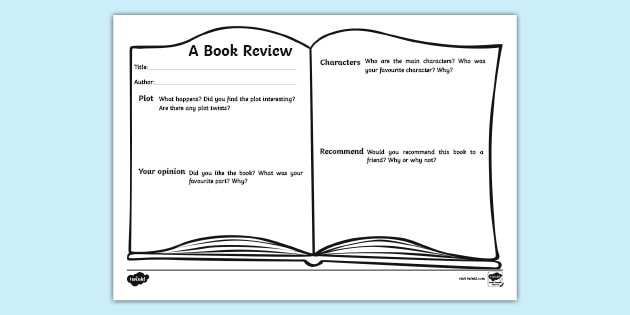In a world burgeoning with stories, characters, and adventures, second-grade students embark on their literary journeys with unbridled enthusiasm. At this formative stage, book reviews become instruments of reflection, critical thinking, and personal expression. As educators, parents, and book lovers, we should encourage young readers to articulate their thoughts on the texts they encounter. This article delves into the diverse types of content that can enrich a second-grade book review, fostering an engaging platform for both literacy and creativity.
The essence of a book review for second graders is multifaceted. It transcends mere summaries, morphing into a dialogue between the reader and the text. A well-structured review encompasses diverse elements, including thematic discussion, character examination, personal impressions, and artistic representation. Each component offers a unique lens through which young readers can express their understanding and appreciation of literature.
Thematic Exploration
In the realm of book reviews, themes serve as the backbone of analysis. A second-grade reviewer might begin by identifying the core themes of their chosen book. Common themes such as friendship, bravery, and discovery resonate universally with young readers. Encouraging children to boil down complex narratives to their essential messages cultivates critical thinking skills. Why is friendship crucial in this tale? How does the protagonist demonstrate bravery? By posing these questions, children can engage with the text at a deeper level, fostering intellectual curiosity.
Incorporating theme-based discussions into book reviews not only enhances comprehension but also allows young readers to draw correlations between the literature and their own lives. For instance, a child reading a story about teamwork might relate it to their experiences on the playground or in group activities at school. Thus, the review becomes a personal reflection, bridging the gap between fiction and reality.
Character Analysis
The characters in a story often serve as reflections of ourselves. In a second-grade book review, an examination of characters can be particularly enlightening. Young readers are asked to describe the protagonist and antagonist, exploring their traits, motivations, and relationships. Questions such as “What makes the main character interesting?” or “How do the characters evolve throughout the narrative?” can elicit thoughtful responses. This exploration allows children to empathize with the characters, encouraging a deeper emotional connection to the story.
Moreover, character analysis offers an opportunity for creative engagement. Children can create character maps or drawings that illustrate their interpretations. These projects not only augment the written review but also cater to various learning styles, ensuring that visual and kinesthetic learners can also express their insights effectively.
Personal Impressions
One of the most delightful aspects of a book review is the personal impression the reader brings to the discussion. Children possess unique voices that infuse their reviews with personality. Encouraging second graders to convey what they loved—or didn’t love—about a book allows for an authentic expression of sentiment. Did the plot twist take them by surprise? Did they feel saddened by a character’s fate? This section of the review is where young readers can utilize descriptive language, crafting vivid images and emotions that resonate with their audience.
Engaging students in discussions about their reading experiences not only hones their writing skills but also builds confidence in expressing opinions. This practice reinforces the idea that literature can elicit strong emotional responses—an invaluable lesson in recognizing and articulating feelings.
Artistic Representation
A captivating book review doesn’t have to be limited to text. Integrating artistic elements can transform a standard review into an engaging multifaceted experience. Inviting second graders to include drawings, collages, or even digital art related to the book amplifies their expression. For example, they may create a cover redesign that reflects their interpretation of the story or draw scenes that resonated with them. Art not only supplements the review but also deepens the reader’s connection to the material.
Integrating artistic representation into book reviews can also inspire creativity beyond the written word. Young readers might find themselves exploring various artistic techniques and mediums, enhancing their appreciation for the arts while developing fine motor skills. These art-infused reviews can serve as delightful presentations, allowing students to share their insights in a dynamic way.
Peer Review and Collaboration
Encouraging peer interaction surrounding book reviews can elevate the experience significantly. By participating in group discussions, students gain exposure to diverse perspectives on the same text. They can exchange ideas, challenge each other’s interpretations, and celebrate the array of thoughts that literature can incite. This collaborative approach underscores the value of community in literacy, as students learn to appreciate differing viewpoints.
Furthermore, incorporating a peer review process helps foster constructive criticism and polishing of their writing. Through guided feedback sessions, students can offer and receive insights on how to refine their reviews, instilling a sense of camaraderie among young readers. This collaboration builds a supportive environment ideal for growing readers.
Conclusion
In summary, the second-grade book review serves as a vibrant tapestry woven from thematic exploration, character analysis, personal impressions, artistic representation, and collaborative feedback. As readers navigate through their literary quests, they develop both critical thinking skills and a love for storytelling. Each review becomes an opportunity to engage with the world of literature thoughtfully and creatively. By nurturing this process, we empower young readers to articulate their thoughts and foster a lifelong passion for reading—one book at a time.
